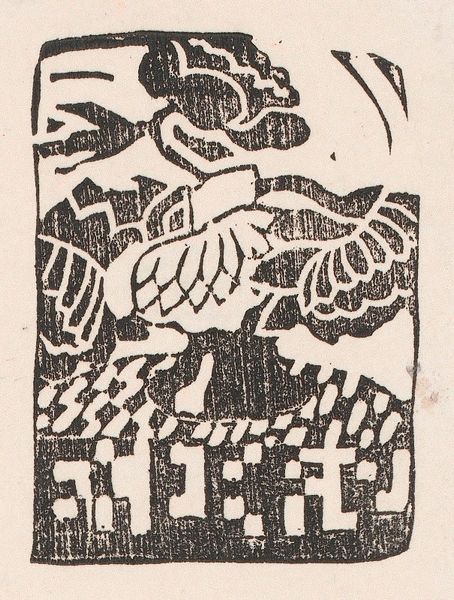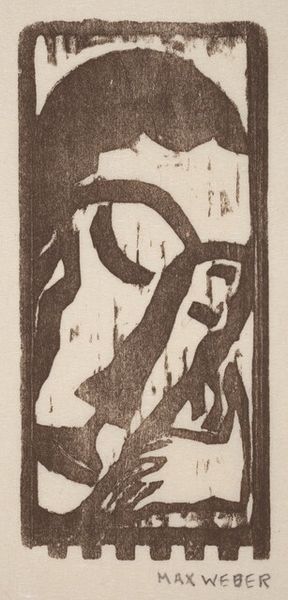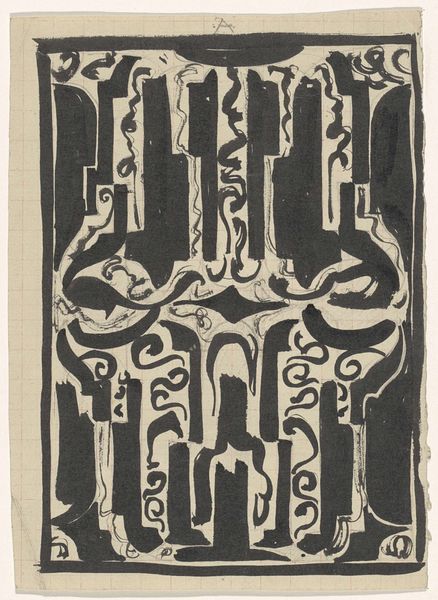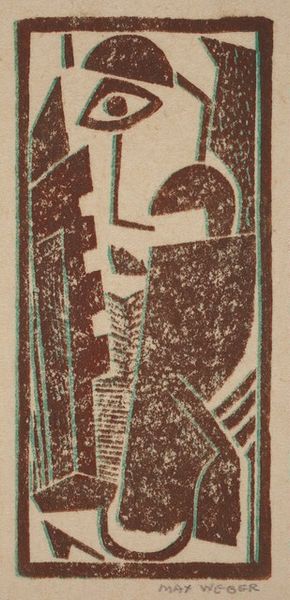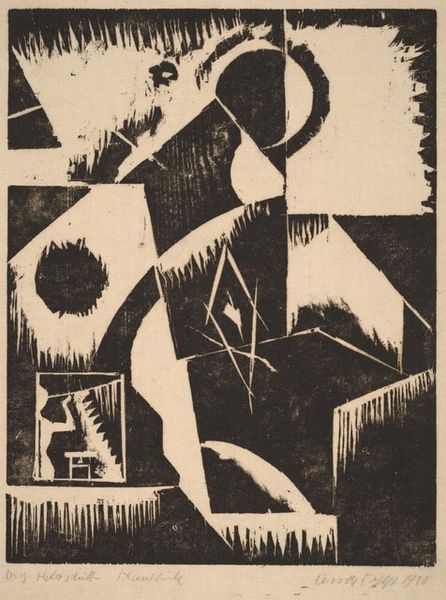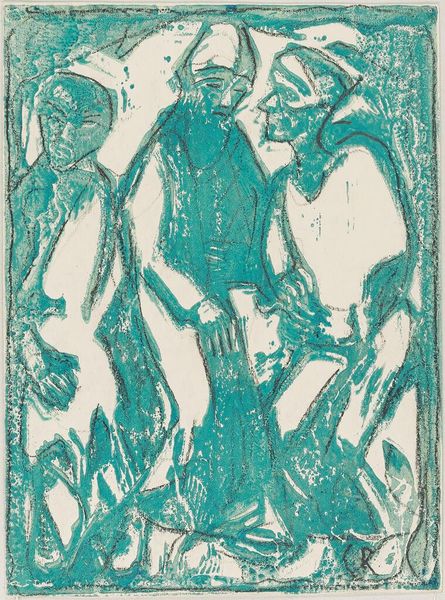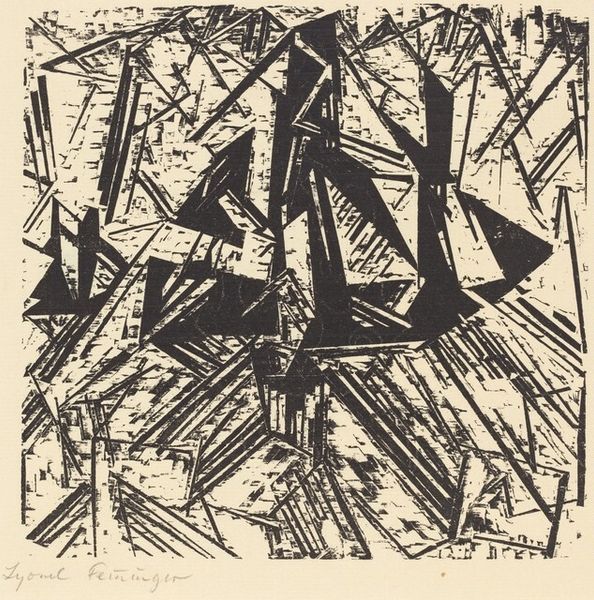
print, woodcut
# print
#
abstract
#
geometric
#
expressionism
#
woodcut
#
abstraction
Copyright: Public Domain: Artvee
Editor: This is "Gestileerde zonnebloem" or "Stylized Sunflower" by Reijer Stolk, created in 1906. It’s a woodcut print. I’m immediately struck by how geometric it is, almost like an explosion frozen in time. What symbolic language do you see at play here? Curator: The fragmentation immediately catches my eye. Notice how the traditional image of a sunflower – often associated with warmth and optimism – is broken down into these sharp, almost violent shards. Do you think this fracturing speaks to any shift in cultural sentiment at the turn of the century? Editor: It could be related to the emerging anxieties about modernization maybe? I suppose breaking down the flower represents anxieties around industrialization... Curator: Exactly! It also moves into Expressionism, doesn't it? Consider the woodcut medium itself – a very tactile, laborious process – now used to depict something so radically abstracted. Do you see any link between the medium and message? Editor: I do! Woodcuts can have this bold, stark feel. Perhaps that deliberate, even rough quality reinforces that feeling of things being torn apart, as you noted, countering the expected beauty of a sunflower. Curator: Precisely! Think about the power of icons. We expect certain images to evoke specific feelings, but Stolk disrupts that expectation. What feeling emerges from the print for you, and is that how you normally regard sunflowers? Editor: Well, I think of sunflowers and automatically feel joy, but this print makes me feel...unsettled. I am looking at the same thing through a different perspective. Curator: I agree, I now see the weight of disruption, of something being forcefully changed, hidden in plain sight, disrupting the collective memory around the subject. Editor: It's interesting how distorting something so familiar can make it so thought-provoking. Curator: Indeed. And how a simple flower can hold so much cultural and psychological weight when viewed through a different lens.
Comments
No comments
Be the first to comment and join the conversation on the ultimate creative platform.
